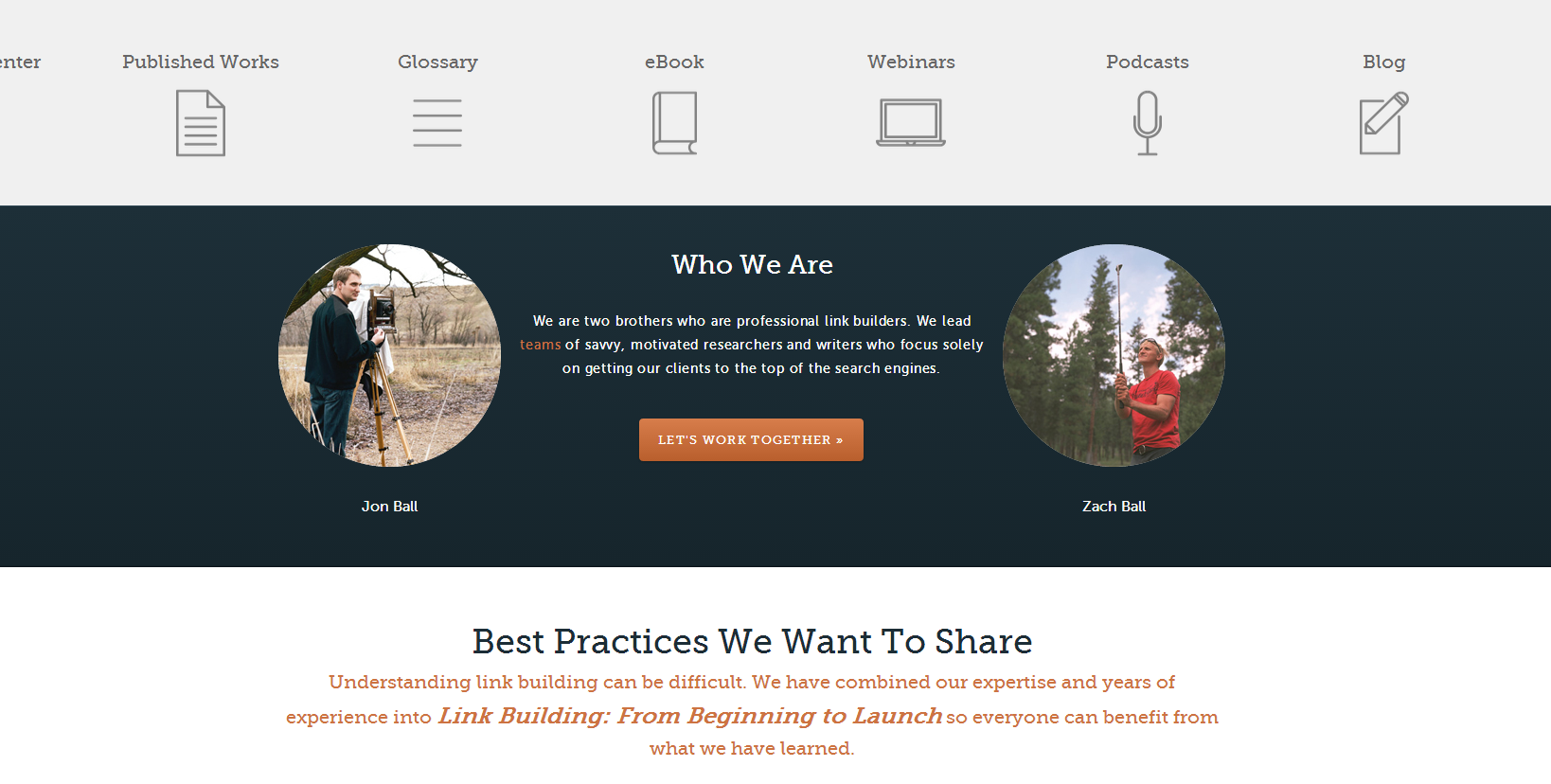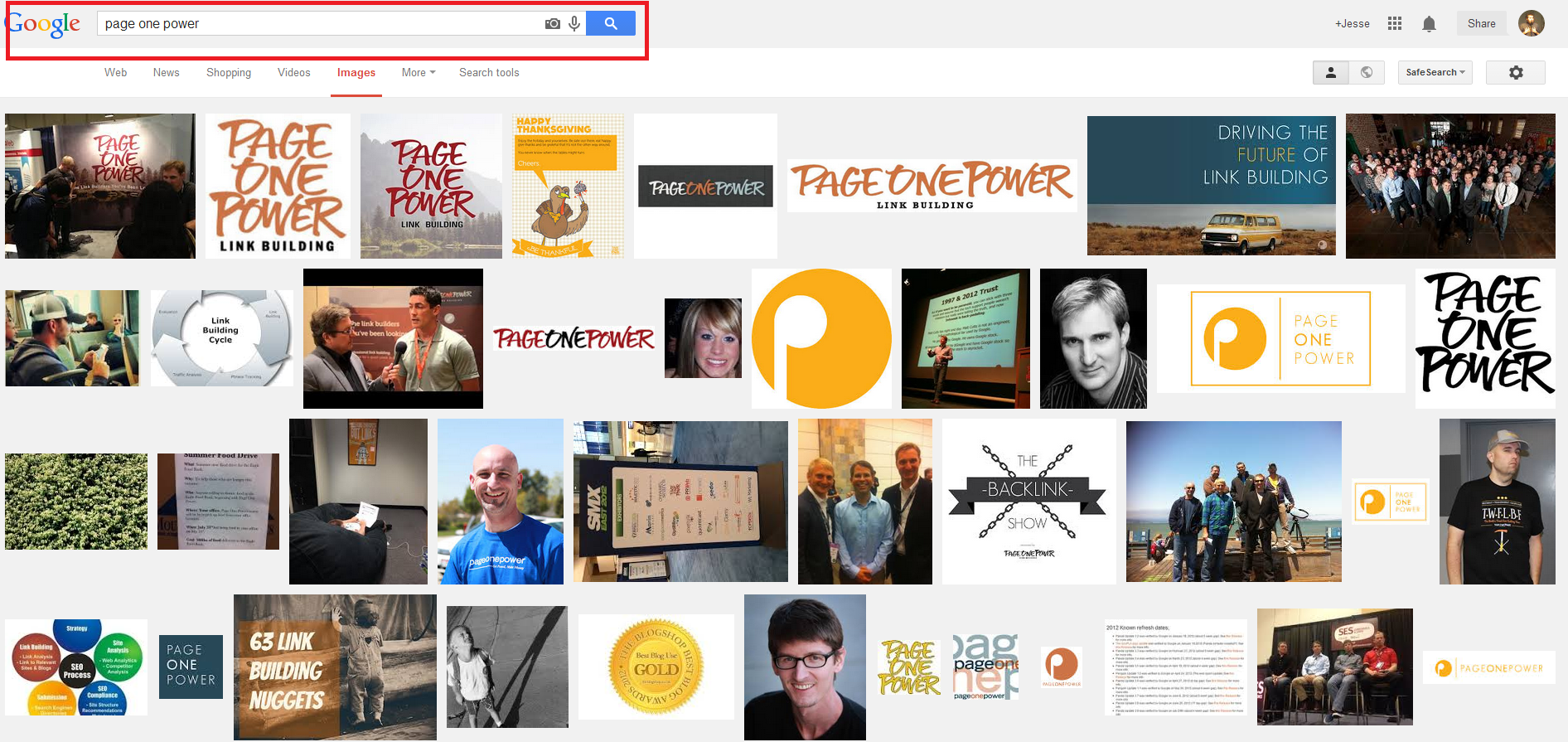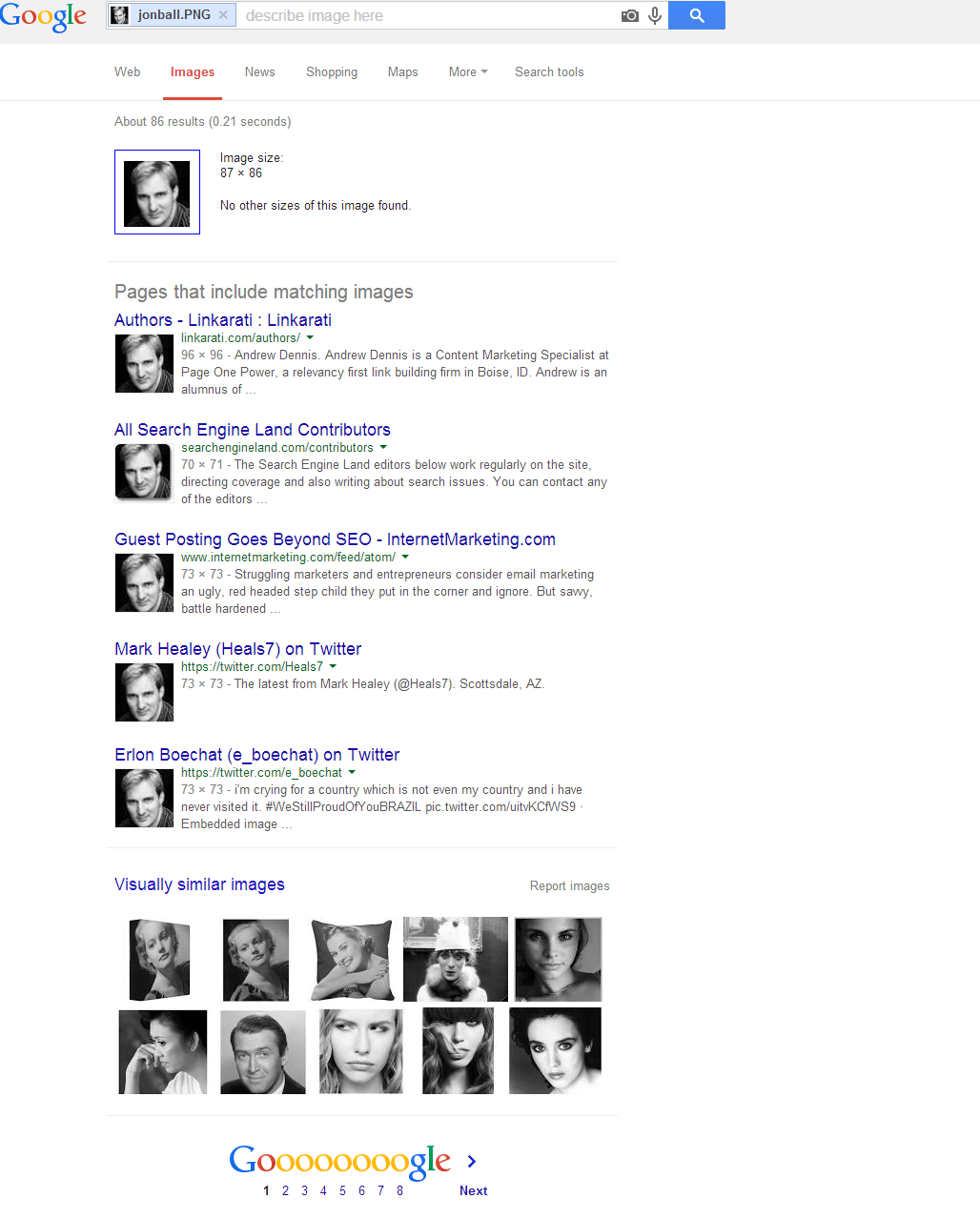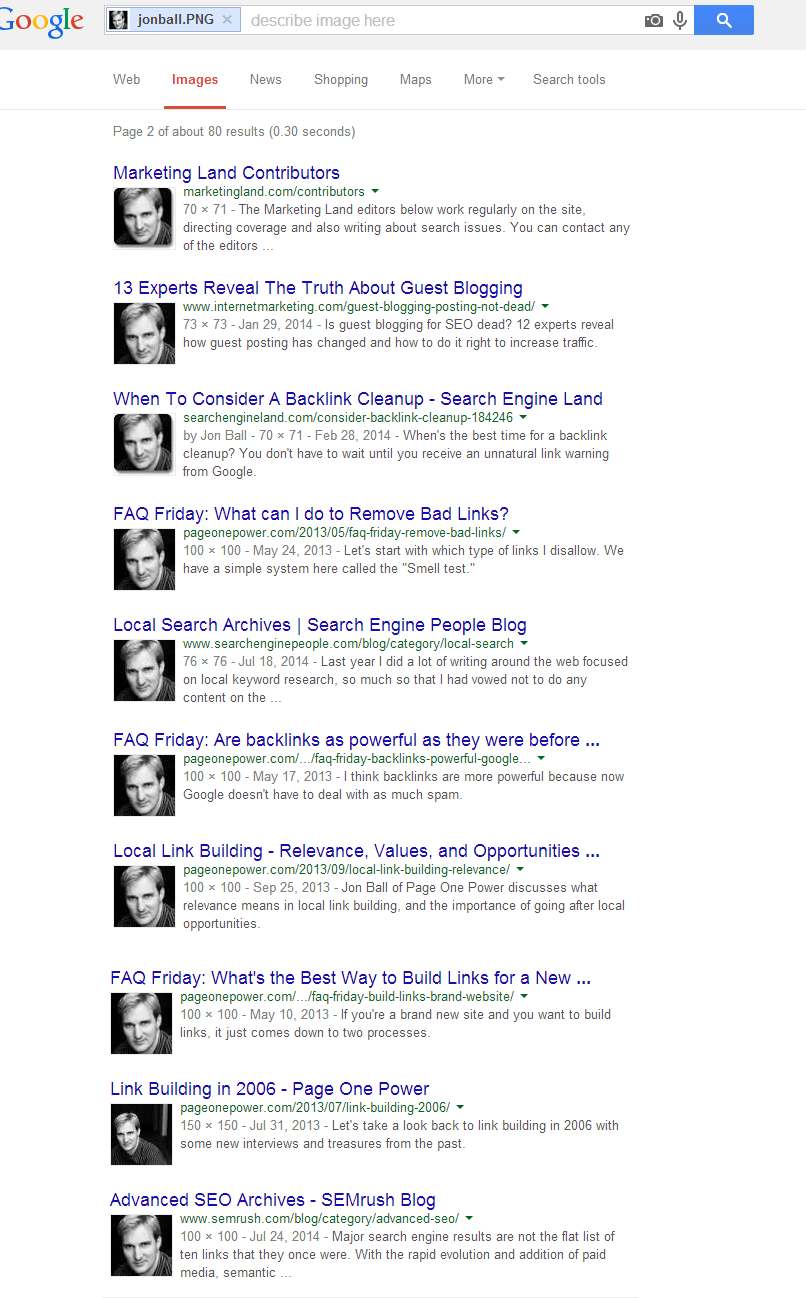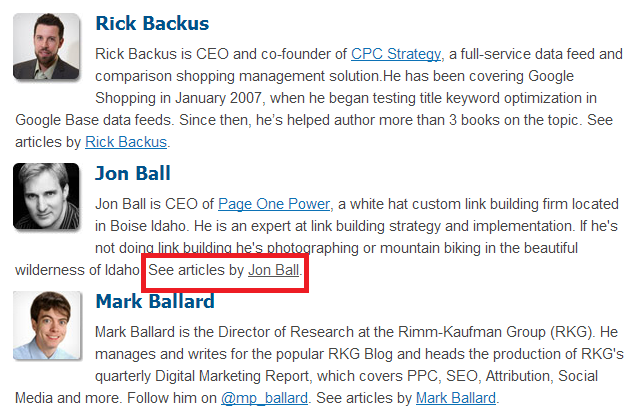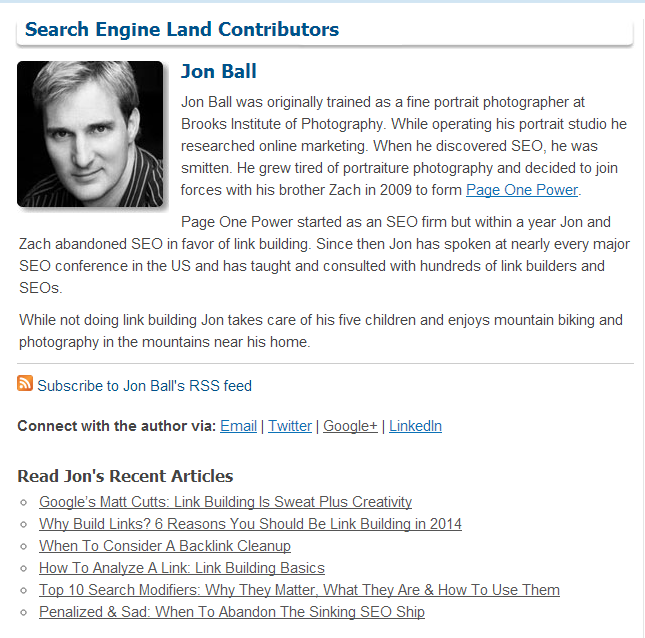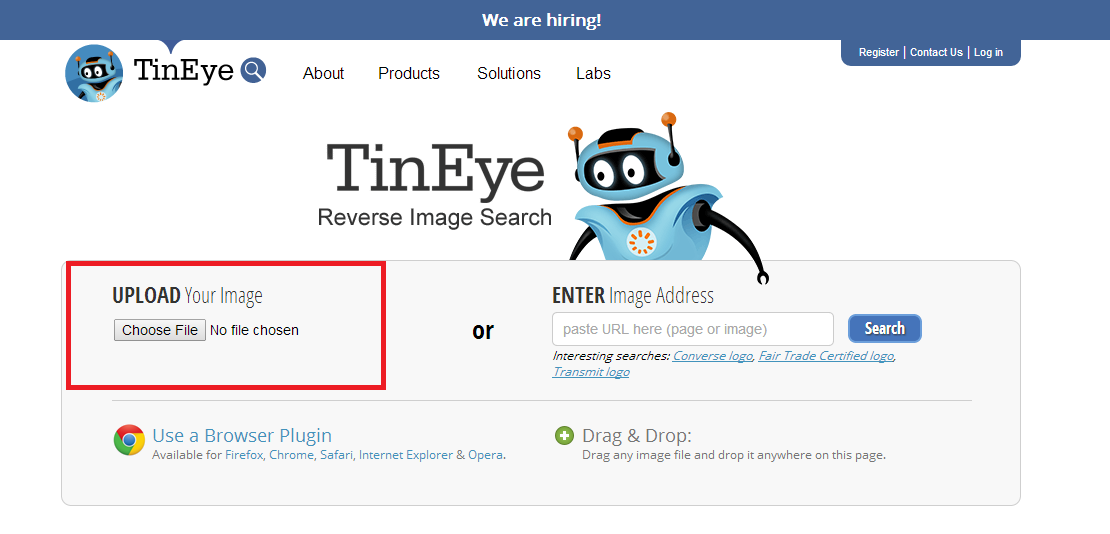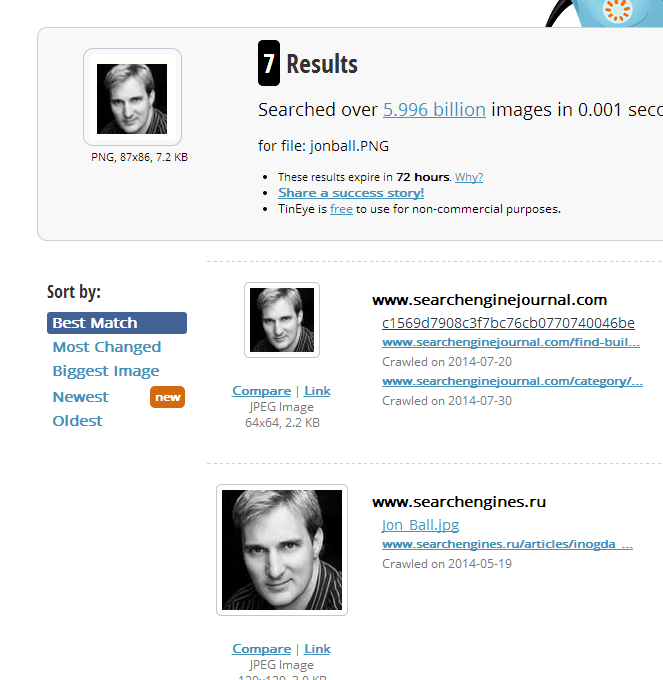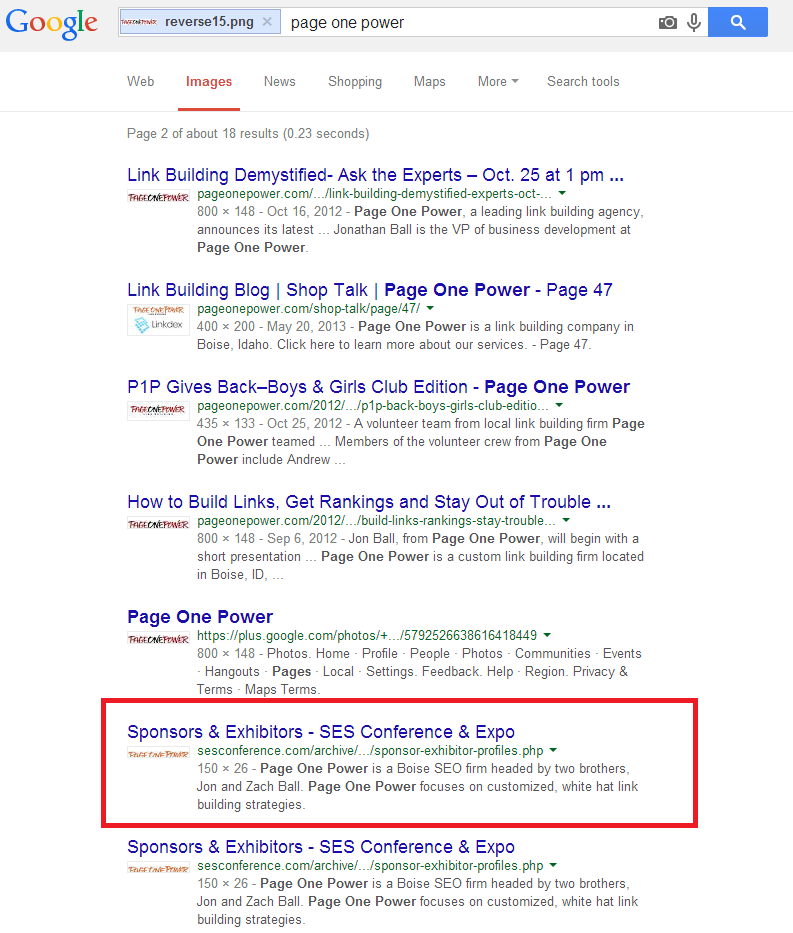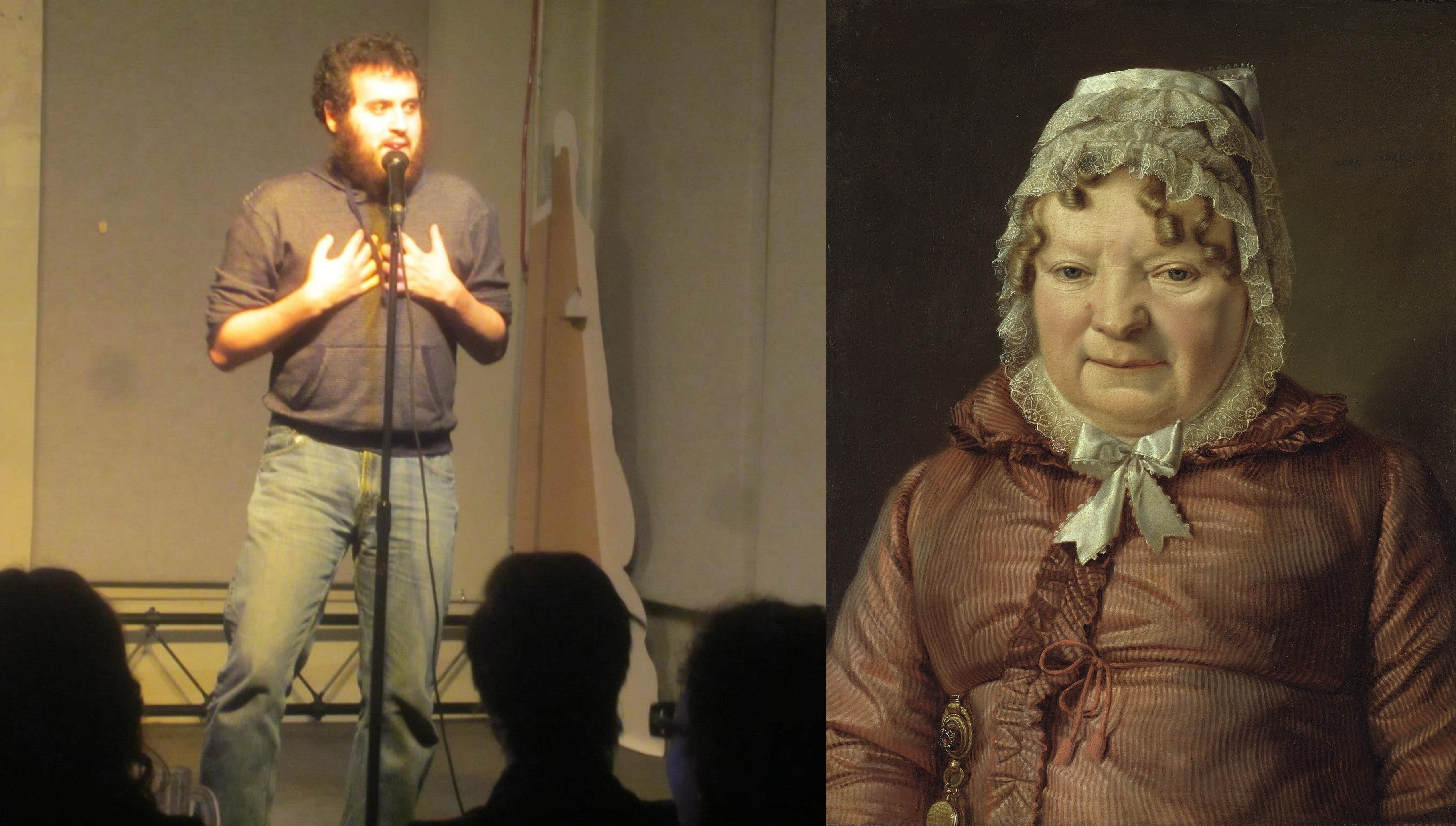Welcome to another edition of Tutorial Tuesday! This week, I will be talking about how to track your competitors by using reverse image search.
Unless your name is Banksy or Terrence Malick, there’s a recent picture of you online somewhere. Chances are you are the person guilty of uploading it. If you’re a frequent blogger, it’s essential to have your picture out there. A photo tells the reader that you are a real person and it establishes your brand/personality.
In the age we live in, when your picture is online, it pretty much becomes fair game for use. You can do whatever you want with your pictures obviously: so can your competitors.
Tracking a competitor is the one of the best link building strategies available. Yes, it can be done through a thorough backlink analysis, but there are other ways to find out where your competitors’ inbound links are. One of these ways is through the use of a reverse image search.
How exactly? I’m going to show you in this scenario, wherein I pretend that Linkarati has a competitor in Page One Power, the company I work for. How can I use photos of Page One Power and its employees to find valuable backlink opportunities?
Reverse Image Search is just one link building tactic of many. Learn the rest in our downloadable ebook:
Step One: Find a Photo
So Page One Power is my hypothetical competitor. If I’m to find a photo I want to use, the first place I would look is my competitor’s website.
This is the above-the-fold of Page One Power’s website, complete with a logo in the top left corner. Further down, you can find pictures of the founders.
There’s no reason you can’t pick one of these two pictures to search as well.
You can also use Google to find pictures worth searching for.
A branded search like this has the potential to return a history of logos and employees that work at the company.
For this scenario, I’m going to use Google a different way to find photos. If I’m looking for a guest blogging opportunity, I’m going to go to Google+. Even though authorship looks increasingly like a thing of the past, I don’t doubt that a savvy SEO like Jon Ball used his G+ photo for articles he wrote.
This is the cover photo on Jon’s G+ profile. By clicking on the headshot, I can save the image to my harddrive and subsequently do a reverse image search. This will help me to find websites he’s been published on.
Step Two: Search That Photo
One of my favorite features that Google has is the reverse image search. When you search in Google Images, you can see an icon on the far right side of the search bar:

Clicking this icon leads you to this screen:
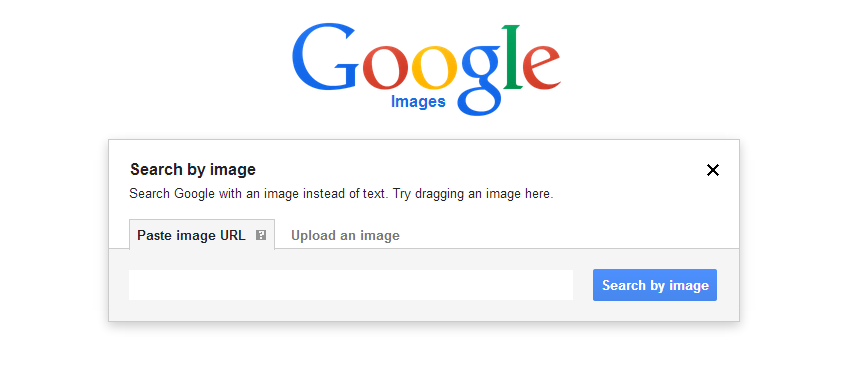 Looks a wee different, doesn’t it?
Looks a wee different, doesn’t it?
Remember that image of my boss that I saved? Click on “upload an image’ above the search bar and choose that image. In a matter of seconds, Google will return a page like this:
This is just page one. It’s not a lot of results. That’s possibly because Google wants to make room for some other features. What about page two?
That’s better.
Step Three: Inspect the Results
The first result on page one points back to this very blog.
The result under Linkarati points to the contributors page on Search Engine Land. The smarties at SEL structure their contributors page alphabetically by surname. You don’t have to scroll that far to find Jon.
It turns out, Jon has written a lot of content for SEL.
As Jon’s competitor, this is something I would want to know. If I’m going to stay competitive with Page One Power, I want the same kind of links that have been Page One Powerful for them. Search Engine Land has a domain authority of 91. Yeah, that’s definitely a link I want.
It’s not just about the links either in this instance. When you have a voice on a site with the large amount of authority that SEL has, some of that authority rubs off on you. A site like theirs doesn’t just publish anybody. Not only does this site spread important link equity, it’s a highly visible platform to deliver your message and to establish yourself as a niche authority.
According to my reverse image search, there are other links Jon Ball has built that I would want. Marketing Land? Check. Search Engine People? Check. That’s a sample of link prospects I now have on my list.
Not everything the search returns is going to be golden, so you have to conduct the smell test. The reverse image search will return some oddball Twitter results. One profile I clicked on didn’t even follow @linkbuildingjon; he was just a suggested profile to follow.
Step Four: Other Tools
If you don’t want to use Google for your reverse image search, there are some other great tools to use. The best one I’ve encountered is TinEye.
TinEye works in a similar vein of Google’s reverse image function.
Upon uploading Jon’s headshot, TinEye will return a page similar to this:
TinEye is useful, but they only provided seven results. Google’s search returned several pages worth.
Step Five: Other Opportunities
Of course to this point, I’ve only talked about Jon’s headshot. Doing a reverse image search with this will likely pinpoint a large amount of guest blogging opportunities. Guest blog links are still great links, but they’re hardly the only breed.
If I were competing with Page One Power, I would want to run a reverse image on their logo as well.
Doing a reverse image search on a logo opens up opportunities to find potential link prospects on resource pages and niche directories, both of which can be valuable links. For example, I can find a link on this site for the 2013 Search Engine Strategies Conference in Toronto.
Page One Power took part in that conference, even if I didn’t get to go. No, I’m not jealous or anything. It’s Canada.
I wouldn’t be able to get a link on this page unless I set up an exhibition at that conference, so the SEO benefit here is zilch. But tracking your competitors isn’t only about link building; you can discover a plethora of ways your competitor is trying to beat you.
Conclusion
Truth be told, reverse image search is hardly the golden goose of link building. If you rely solely upon it, you’re setting yourself up for failure. That goes for any individual tactic. A link building campaign can only succeed with a mixture of strategies, some large scale, some small. Reverse image search will typically fall in the latter, but if is a quick way to find valuable link opportunities your competitor has already seized upon.
By implementing a reverse image search campaign, you can better understand your competitors and your industry. The better you understand your competitors, the more likely other successful link building avenues will open up for you. This will not only benefit your link building endeavor, but your overall marketing strategy as well.
P.S.: My favorite part of writing this article was discovering the “visually similar images” feature at the bottom. Google thinks my boss looks like Hollywood icon Jimmy Stewart.

That’s pretty cool. I wonder who I look like.
It’s official: I’m switching over to Bing.




